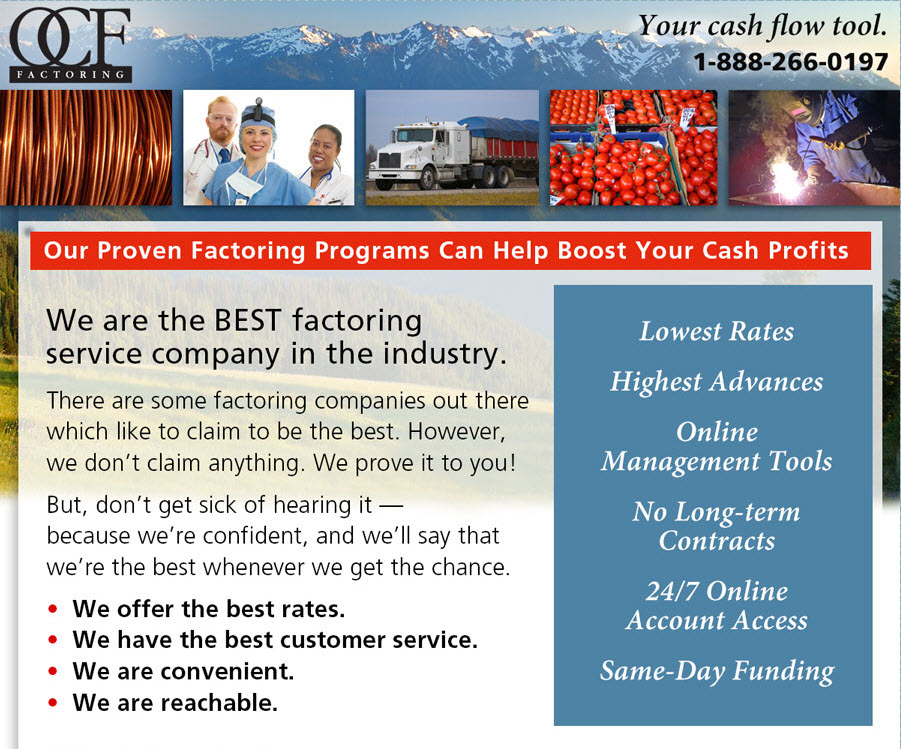

How Factoring Works
The First Step:
The Client profile
You begin by filling out a simple client profile, which we
will
provide you. Please click here for profile. This profile
will cover basics such as your company's name and
address, the nature of your business, and information
about your customers.
You
may need to supply an accounts receivable
aging report, existing customers' credit limits, or other related documents.
Remember the factor will attempt to determine the creditworthiness of your customers independent of their
credit history with your business. We want a broader
view of their
overall credit status.
During this initial stage you will also cover basic
financial arrangements with the factor. For instance,
what will be the monthly volume of invoices you
want to factor(i.e. how liquid do you need to be)?
What will the advance rate and the discount rate be?
How quickly will the factor issue the advance to you?
In most cases, the answers to these questions will
vary depending on the financial strength of your
customer(s) and the anticipated monthly sales
volume to be factored. Variations between industries,
length of time in operation, and general reputation of
how
risky a customer of yours may be. For instance,
a long list of high-risk clients will cost you more in
factoring fees than a short list of government
agencies with a slow-pay
history.
In the factoring business, volume is all important.
The higher your volume(the dollar amount of
invoices you factor), the more favorable your rates will be.
The factor will use the client profile you submit to
determine if your business is suitable for factoring.
This process is simply the factor analyzing the
risks versus the rewards, using the information you provided.
Once approved, you can expect to negotiate terms
and conditions. The negotiation process takes
several aspects of the deal into consideration.
For instance, if you want to factor $10,000,
you can't expect as good a deal as a company
that wants to factor $500,000.
During the negotiation process, you will become
well aware of what it costs to factor your
accounts
receivable. After you reach an agreement
with the factor, the funding wheels begin to roll.
The factor conducts due diligence by researching y
our customers' credit and any liens placed against
your
company. The factor also confirms the
legitimacy of your invoice before buying your
receivables and advancing cash to you.